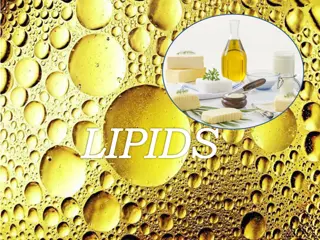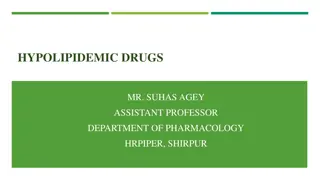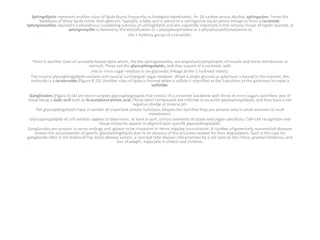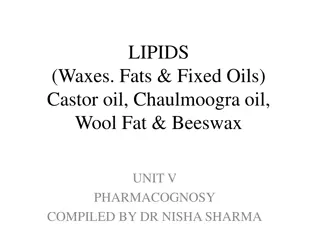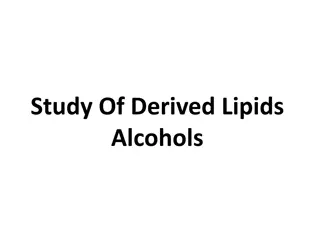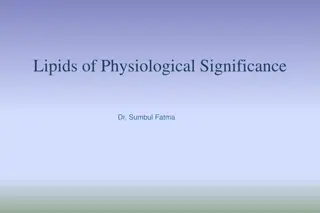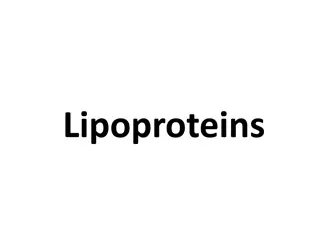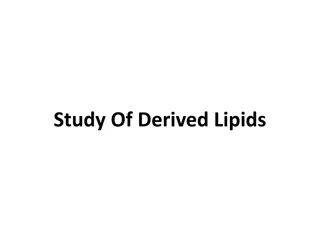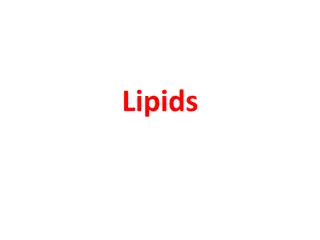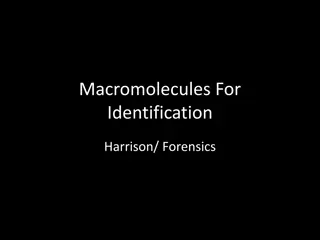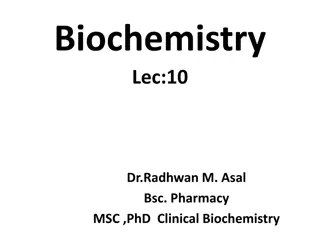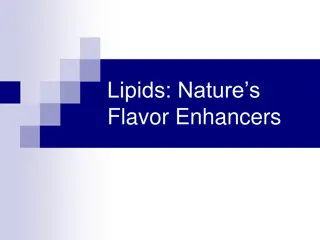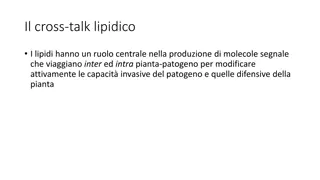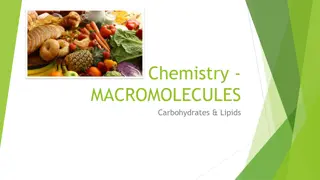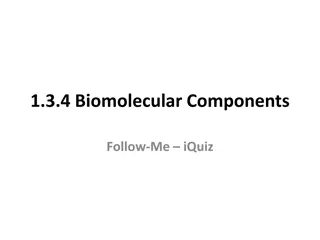
Fatty Acids and Lipid Analysis Techniques
Explore the classification of fatty acids, including saturated and unsaturated types, essential and non-essential fatty acids, and the significance of lipid analysis tests like the copper acetate test and Liebermann-Burchard test for detecting cholesterol.
Download Presentation

Please find below an Image/Link to download the presentation.
The content on the website is provided AS IS for your information and personal use only. It may not be sold, licensed, or shared on other websites without obtaining consent from the author. If you encounter any issues during the download, it is possible that the publisher has removed the file from their server.
You are allowed to download the files provided on this website for personal or commercial use, subject to the condition that they are used lawfully. All files are the property of their respective owners.
The content on the website is provided AS IS for your information and personal use only. It may not be sold, licensed, or shared on other websites without obtaining consent from the author.
E N D
Presentation Transcript
Lipids-II BCH 302 [PRACTICAL]
Fatty Acids can be classified to: A-Saturated Fatty Acids: Fatty acids have no double bonds ,side chain are (alkane). 1)Short chain: From 4 to 10 Carbon atoms ,and present as liquid in room Temp. 2)Long chain: More than 10 Carbone atoms, present in solid at room Temp. e.g. Palmatic (16) acid and Stearic(18) acid. B-Unsaturated Fatty Acids: have one or more double bonds between carbon atoms side chain. [has at least one double bond]. 1)Essential Fatty acids: linolenic acid18-C, 3 double bond ( -3) Linoleic acid 18-C, 2 double bond ( -6) 2)Non essential Fatty acids: Can be synthesized in the body: Oleic acid
1-Copper acetate test: Objective: This test is used to distinguish between oil [neutral fat] and fatty acid [saturated and unsaturated]. Principle: The copper acetate solution does not react with the oils (or fats), while fatty acids [saturated and unsaturated ] react with copper acetate to form copper salt. Copper salt formed in the case of fatty acids can only be extracted by petroleum ether.
olive oil: notice that petroleum ether upper layer containing the dissolved oil and appears colorless. petroleum ether and dissolved oil copper acetate
Oleic acid: The upper layer of petroleum ether becomes green as a result of copper oleate [copper salt]. copper oleate in the petroleum ether copper acetate copper oleate
2-Liebermann - Burchard Test [acetic anhydride test] : Objective: To detect the presence of cholesterol. Principle: Liebermann - Burchard Test , is a chemical estimation of cholesterol, the cholesterol is react as a typical alcohol with a strong concentrated acids and the product are colored substances. -Acetic anhydride are used as solvent and dehydrating agents. -Sulfuric acid is used as dehydrating and oxidizing agent . A positive result is observed when the solution becomes red or pink , then blue, and finally bluish green color.
3-Unsaturation Test: Objective: Determine the degree of saturation of different types oils. Principle: All neutral contain glycerides of some unsaturated fatty acids. These unsaturated fatty acids become saturated by taking up iodine. If the fat contains more unsaturated fatty acids, it will take up more iodine. Halogens ( I, Br ) will add across the double bonds and thus the decolorization of an iodine or bromine solution will indicate the presence of unsaturated fatty acids. In this lab, Hub s iodine reagent will be used (alcoholic solution of iodine containing some mercuric chloride)
4-acrolein test: Objective: is used to detect glycrol or fats. -Most lipid are found in the form of triglycerides, an ester formed from glycerol and fatty acids.
Principle: When a fat is heated strongly in the presence of a dehydrating agent such as KHSO4 [potassium bisulphate], the glycerol portion of the molecule is dehydrated to form the unsaturated aldehyde, acrolein CH2=CH-CHO. which can be distinguished by its irritating acrid smell and as burnt grease.
-Other way to detect lipids is by dye Sudan IV (general dye for lipid ), which produce red color with lipid. Sudan IV (general dye for lipid )

